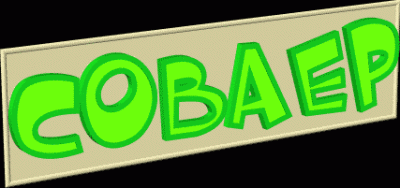Digital Signatures Law
Technological and communication tool dedicated to disseminate information regarding the Digital Signatures Law: fundamental aspects of this law, link to laws, videos related to the topic, diverse opinions, related terms, Powerpoint presentation of the topic, essay or position about the law, magazine article among other information.

Introduction to the Digital Signatures Law Digital signature is said to a mathematical scheme that serves to demonstrate the authenticity of a digital message that can be for example an electronic document. A digital signature gives the recipient assurance that the message was created by the sender, and that it was not altered during transmission. Digital signatures are commonly used for software distribution, financial transactions and in other areas where it is important to detect counterfeiting and tampering. It consists of a cryptographic method that associates the identity of a person or a computer equipment with the message or document. Depending on the type of signature, you can also ensure the integrity of the document or message. The electronic signature, such as the holographic signature, can be linked to a document to identify the author, to indicate compliance with the content, to indicate that it has been read and, in its absence, to show the type of signature and guarantee that its content. As a result of the need to provide greater security and legal effectiveness to communications and agreements made through information and communication technologies and the development of international electronic commerce, the electronic signature has emerged. In the framework of electronic contracting, things have changed enough. There is the same need to sign the documents to authenticate or express approval of the content, but in this case it is not a deed of one's own hand, nor of a name and surname or title, at least not literally. The electronic signature is the solution given by new technologies to the need to legally guarantee hiring done by electronic means, granting, as long as it meets certain requirements, the same legal validity as a handwritten signature. In a broad sense, electronic signature consists of "data in electronic form consigned in a data message, or attached or logically associated thereto, which can be used to identify the signer in relation to the data message and indicate that the signer approves the information collected in the data message "or the" dataset in electronic form, consigned together with others or associated with them, which may be used as a means of identification of the signatory ".
Introduction to the Digital Signatures Law Digital signature is said to a mathematical scheme that serves to demonstrate the authenticity of a digital message that can be for example an electronic document. A digital signature gives the recipient assurance that the message was created by the sender, and that it was not altered during transmission. Digital signatures are commonly used for software distribution, financial transactions and in other areas where it is important to detect counterfeiting and tampering. It consists of a cryptographic method that associates the identity of a person or a computer equipment with the message or document. Depending on the type of signature, you can also ensure the integrity of the document or message. The electronic signature, such as the holographic signature, can be linked to a document to identify the author, to indicate compliance with the content, to indicate that it has been read and, in its absence, to show the type of signature and guarantee that its content. As a result of the need to provide greater security and legal effectiveness to communications and agreements made through information and communication technologies and the development of international electronic commerce, the electronic signature has emerged. In the framework of electronic contracting, things have changed enough. There is the same need to sign the documents to authenticate or express approval of the content, but in this case it is not a deed of one's own hand, nor of a name and surname or title, at least not literally. The electronic signature is the solution given by new technologies to the need to legally guarantee hiring done by electronic means, granting, as long as it meets certain requirements, the same legal validity as a handwritten signature. In a broad sense, electronic signature consists of "data in electronic form consigned in a data message, or attached or logically associated thereto, which can be used to identify the signer in relation to the data message and indicate that the signer approves the information collected in the data message "or the" dataset in electronic form, consigned together with others or associated with them, which may be used as a means of identification of the signatory ".
Introduction to the Digital Signatures Law Digital signature is said to a mathematical scheme that serves to demonstrate the authenticity of a digital message that can be for example an electronic document. A digital signature gives the recipient assurance that the message was created by the sender, and that it was not altered during transmission. Digital signatures are commonly used for software distribution, financial transactions and in other areas where it is important to detect counterfeiting and tampering. It consists of a cryptographic method that associates the identity of a person or a computer equipment with the message or document. Depending on the type of signature, you can also ensure the integrity of the document or message. The electronic signature, such as the holographic signature, can be linked to a document to identify the author, to indicate compliance with the content, to indicate that it has been read and, in its absence, to show the type of signature and guarantee that its content. As a result of the need to provide greater security and legal effectiveness to communications and agreements made through information and communication technologies and the development of international electronic commerce, the electronic signature has emerged. In the framework of electronic contracting, things have changed enough. There is the same need to sign the documents to authenticate or express approval of the content, but in this case it is not a deed of one's own hand, nor of a name and surname or title, at least not literally. The electronic signature is the solution given by new technologies to the need to legally guarantee hiring done by electronic means, granting, as long as it meets certain requirements, the same legal validity as a handwritten signature. In a broad sense, electronic signature consists of "data in electronic form consigned in a data message, or attached or logically associated thereto, which can be used to identify the signer in relation to the data message and indicate that the signer approves the information collected in the data message "or the" dataset in electronic form, consigned together with others or associated with them, which may be used as a means of identification of the signatory ".
Temas relacionados:
periódico digital
revista digital
periódico gratis
crear periodico digital
publicaciones digitales
contenidos digitales
También te puede interesar
Esta web se reserva el derecho de suprimir, por cualquier razón y sin previo aviso, cualquier contenido generado en los espacios de participación en caso de que los mensajes incluyan insultos, mensajes racistas, sexistas... Tampoco se permitirán los ataques personales ni los comentarios que insistan en boicotear la labor informativa de la web, ni todos aquellos mensajes no relacionados con la noticia que se esté comentando. De no respetarse estas mínimas normas de participación este medio se verá obligado a prescindir de este foro, lamentándolo sinceramente por todos cuantos intervienen y hacen en todo momento un uso absolutamente cívico y respetuoso de la libertad de expresión.
No hay opiniones. Sé el primero en escribir.






